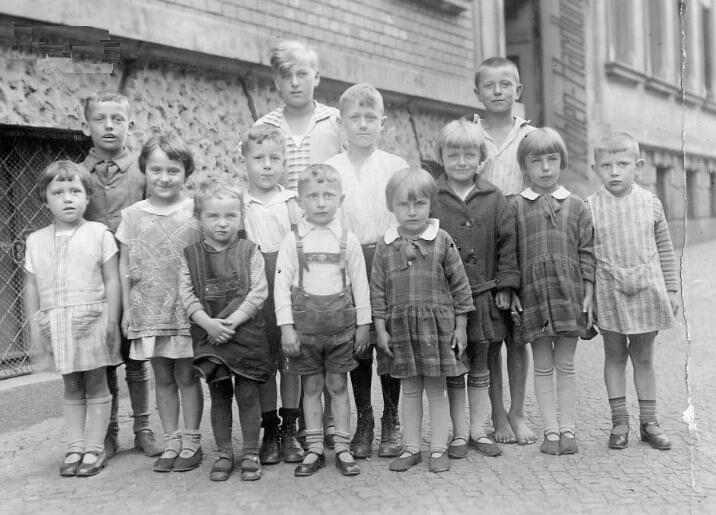
Figure 1.--Here we see a group of German children in 1930. Most are wearing strap shoes. Note that they are the younger children. Here yhe children are wearing strap shoes for casual wear. |

|
Much more information is available on strap shoes in Germany during the 20th century. We see them in the early 20th century, but primarily among the children of affluent families. After World War I, they seem to have been worn by a broader cross section of German children and not just the very affluent. We see many portraits of German boys before the mid-1930s wearing strap shoes. Up until the start of World War II we see quite a number of German boys wearing single-strap or "Mary Jane" style strap shoes. As far as we can tell, they seem to have been particularly popular in the 1920s and early 30s. We see them being worn as both a dress and casual shoe. Even older boys might wear them in the 1920s as a casual shoe. We subsequently see older boys wearing sandals, but not strap shoes. We see this in the 1930s as well, but with slightly younger boys. They were never the predominant shoe worn by German boys, but the photographic record uggests that they were widely worn. By the 1930s we see a variety of other sandal styles and this cntinuued after the War. We see realtively few German boys weaing strap shoes after the War, but other styles of sandals were widely worn. This varied widely from family to damily. The popularity ofsandals seems to have declined to the point that by the early 1960's they appear only to be worn by younger boys and then only rarely.
We see strap shoes in Germany during the early 20th century, but primarily among the children of affluent families. Most Germany boys seem to be wearing heavt, boot-like shoes.
After World War I in the 1920s, strap shoes seem to have been worn by a broader cross section of German children and not just the very affluent. We see many portraits of German boys before the mid-1930s wearing strap shoes. As far as we can tell, they seem to have been particularly popular in the 1920s and early 30s. We see them being worn as both a dress and casual shoe. Even older boys might wear them in the 1920s as a casual shoe. We subsequently see older boys wearing sandals, but not strap shoes. We note photographs of former German royals in the 1920s with several of the boys, often wearing sailors suits with strap shoes. See for example the family of Prince Oskar. We also see ordinary German boys wearing them, both when dressing up or for play and school.
Up until the start of World War II we see quite a number of German boys wearing single-strap or "Mary Jane" style strap shoes. They appear to be a popular style for children. We see both both boys and irls wearing them. They were more popular with girls, but we see msny boys wearing them as well. We see boys wearing both dress shoes and casual shoes in the single strap shoe. We saw these casual stap shoes in the 1920s and the 30s as well, but with slightly younger boys. They were never the predominant shoe worn by German boys, but the photographic record duggests that they were widely worn. By the 1930s we see a variety of other sandal styles and this continuued after the War. We notice the Krupp children in the 1920s wearing strap shoes. http://histclo.com/Bio/k/krupp/bk-gustav.html
A 1931 portrai of the Krupp family shows Eckbert Krup in a little boys outfit with a large collar, short pamts, white socks, and strap shoes. [William Manchester, The Arms of Krupp (Little Brown: Boston, 1968), opposite page 468.]
The 1977 documentary, "Hitler, The Whole Story," shown in 1990 on [the Discovery Channel?] has scenes of a Nazi camp like the US CCC camps of the Depression years. Everyone is wearing army style uniforms of a shirt with knee length shorts. One boy in the background of a scene some way into the film is wearing one strap shoes.
The American Look Magazine (May 24, 1938, p. 14) shows a similar situation. The
picture shows three lines of boys dressed in dark (brown?) uniforms of long pants and long-sleeved shirts. The two boys in the front of the leftmost line are wearing black one-strap shoes. The text accompanying the picture says, "Semi-military labor camps [are] compulsory for all boys of 18. There they work 6 months without pay on military highways, swamp clearance and the like. Above are law students in a labor camp."
We see realtively few German boys weaing strap shoes after the War, but other styles of sandals were widely worn. This varied widely from family to damily.
Yehudi Menhuin ("Unfinished Journey", in a photo plate between pp. 44,45), is shown at 13 in Basel Switzerland--near the German border--in a short sleeved shirt, white ankle socks and one-strap shoes.
Life Magazine in the 1950's showed a couple of older German boys in one-strap shoes, indicating, perhaps, that they were not totally in eclipse even then (July 26 1954, p. 18 "Kinderlift" children to the US, and Sept. 7 1959 p 45 "Eisenhower in Germany").
The popularity of strap shoes seems to have declined to the point that by the early 1960's they appear only to be worn by younger boys and then only rarely. At the same time we see more German boys wearing open-toe sandals.
Navigate the Boys' Historical Clothing Web Site:
[Return to Main German strap shoe chronology page]
[Return to Main shoe page]
[Return to Main German page]
[Introduction]
[Activities]
[Biographies]
[Chronology]
[Clothing styles]
[Countries]
[Bibliographies]
[Contributions]
[FAQs]
[Glossary]
[Images]
[Links]
[Registration]
[Tools]
[Boys' Clothing Home]
